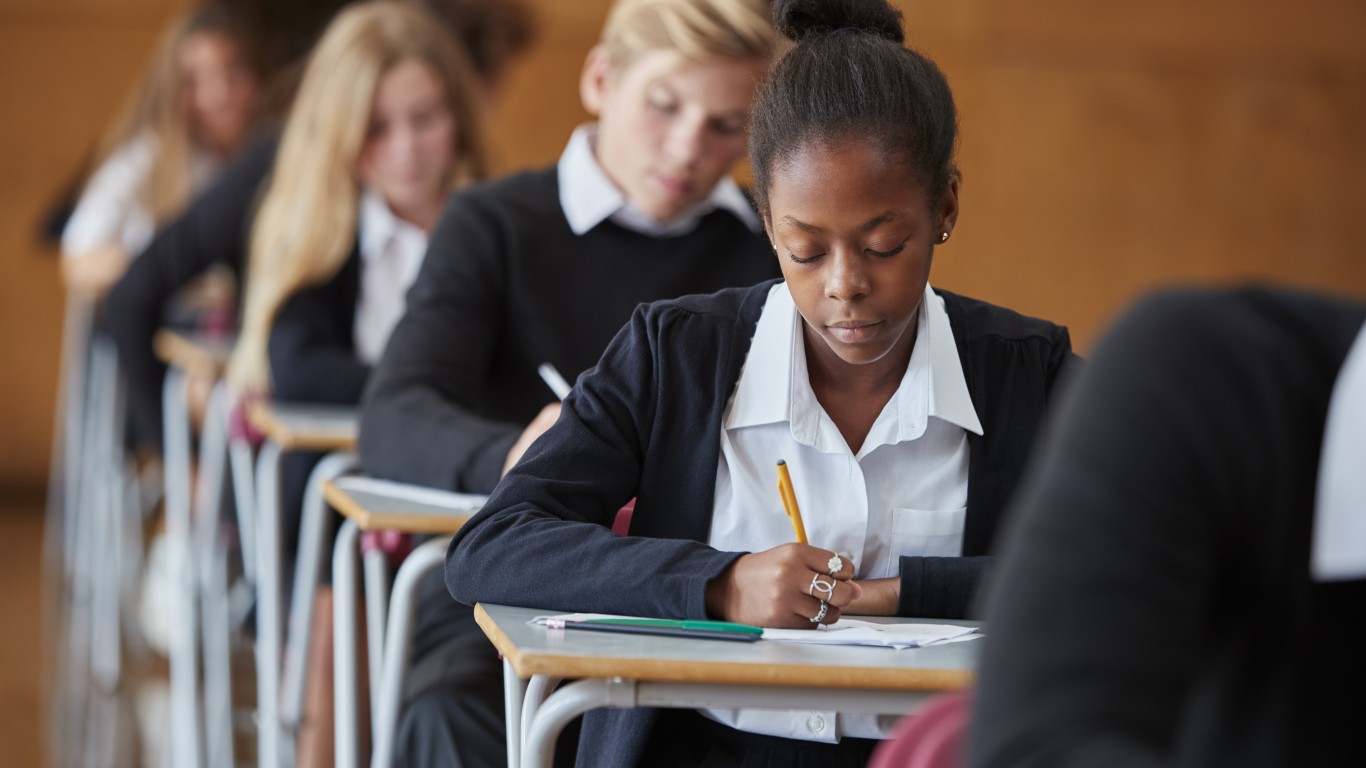
Good news, bad news: More high school students in the class of 2019 took the College Board’s Scholastic Aptitude Test (SAT) than last year. However, overall scores were down.
Neither change was huge. The more than 2.2 million students who took the test this year represent a 4% increase over 2018’s numbers. And the combined mean score (covering the exam’s two sections, math/reading and writing/language) dropped from 1068 to 1059, a decline of only .084%. A perfect score is 1600.
Note that the SAT cheating scandal revealed earlier this year, involving attempts by numerous business executives and celebrities to game the test system, involved too few people to affect the statistics.
Of more concern is the fact that the percentage of students who met benchmarks indicating their ability to handle introductory college classes fell from 47% to 45%, with those not meeting any benchmarks increasing from 27% to 30%. In addition, black and Hispanic students continue to earn lower scores in general than their white and Asian counterparts.
The College Board’s school day testing program, which allows juniors and seniors to take the SAT on a weekday, expanding access to the test, is proving to be a success. This year, 43% of test-takers chose the school day option, up from 36% last year. The idea of the program is to provide greater SAT access to a more diverse group of students.
In its comprehensive report on SAT results for 2019, the College Board notes that, compared to students who take the test on weekends, those who take it on a weekday are more likely to attend schools with a high poverty level, have parents without high school diplomas or college degrees, and identify as an underrepresented minority.
The fact that slightly more students took the SAT this year than in 2018, according to the College Board, means that more students, regardless of background, are considering college as part of their future. These are colleges where admissions are on the rise.
The College Board responded to accusations that the SAT betrayed cultural bias earlier this year by announcing plans to add a so-called adversity score to the test results, an average of two ratings, assessing the student’s home and school environments. The plan was met with a storm of criticism from educators and parents and has been withdrawn.
Robert Schaeffer, public education director of FairTest (the National Center for Fair and Open Testing), told the Wall Street Journal that “The exam remains a more accurate measure of a test-taker’s family background than of an applicant’s capacity to do college level work.”
High scores on the SAT test or its younger rival, the ACT (American College Testing) test, have traditionally been key to admission to the nation’s top colleges, though some 40% of institutions of higher learning are now test-optional. Here are the hardest colleges to get into.
Get Ready To Retire (Sponsored)
Start by taking a quick retirement quiz from SmartAsset that will match you with up to 3 financial advisors that serve your area and beyond in 5 minutes, or less.
Each advisor has been vetted by SmartAsset and is held to a fiduciary standard to act in your best interests.
Here’s how it works:
1. Answer SmartAsset advisor match quiz
2. Review your pre-screened matches at your leisure. Check out the advisors’ profiles.
3. Speak with advisors at no cost to you. Have an introductory call on the phone or introduction in person and choose whom to work with in the future
Thank you for reading! Have some feedback for us?
Contact the 24/7 Wall St. editorial team.


